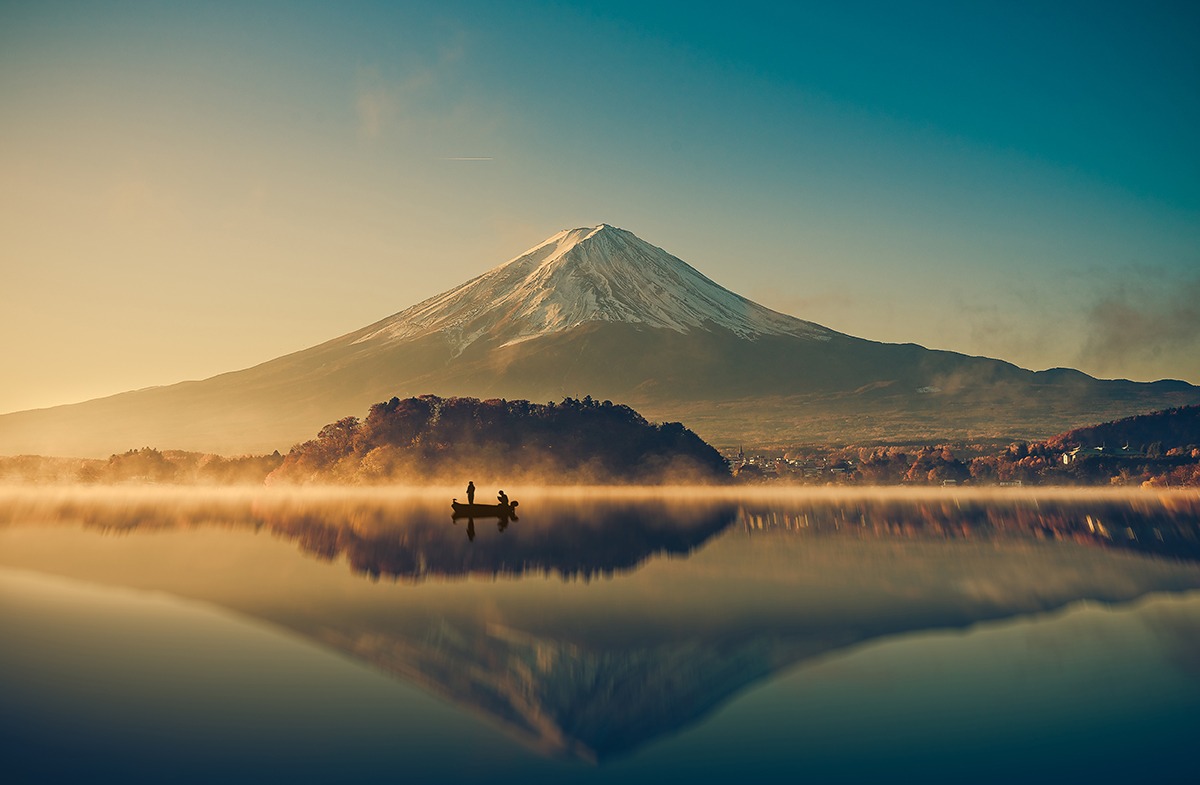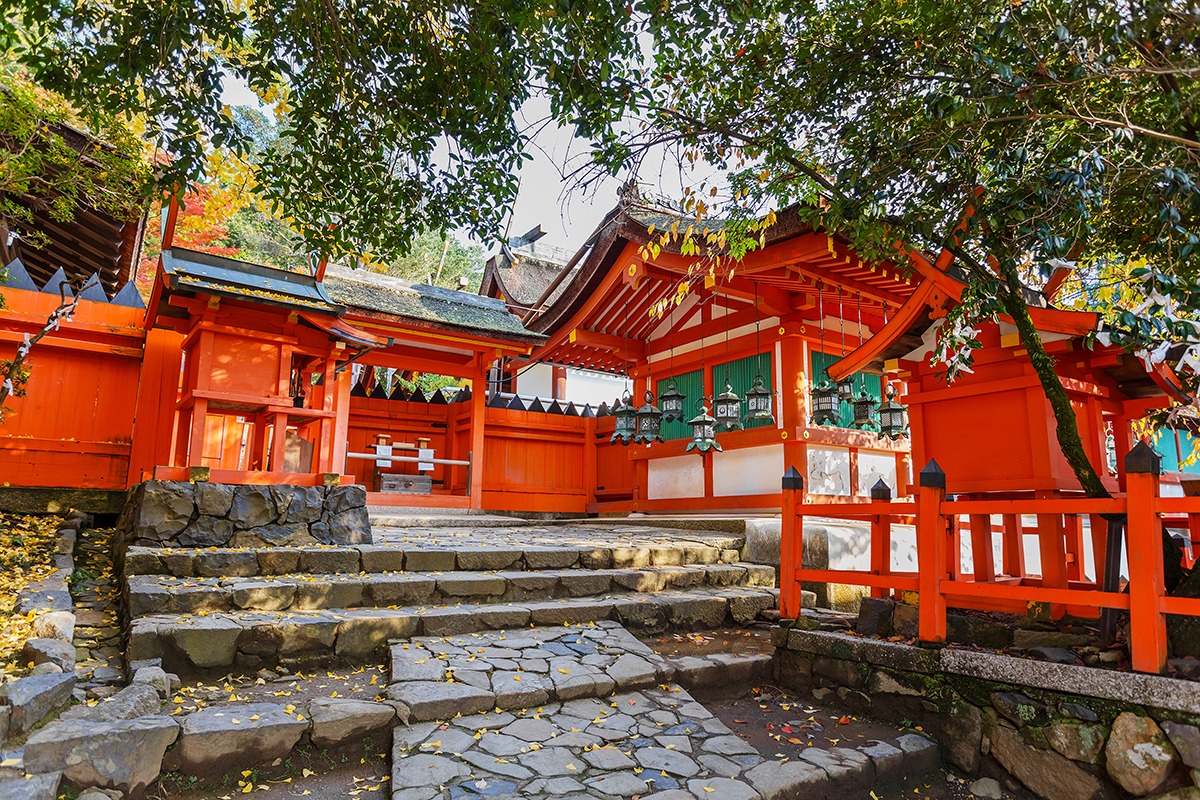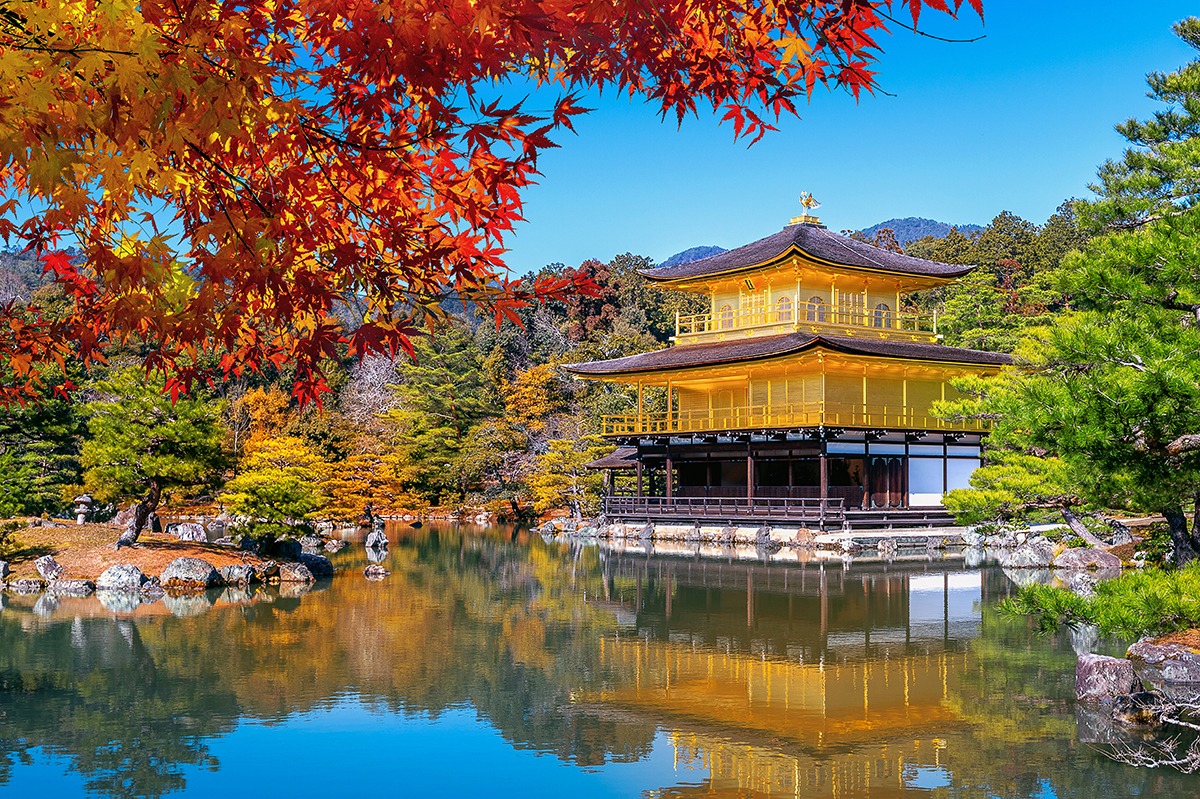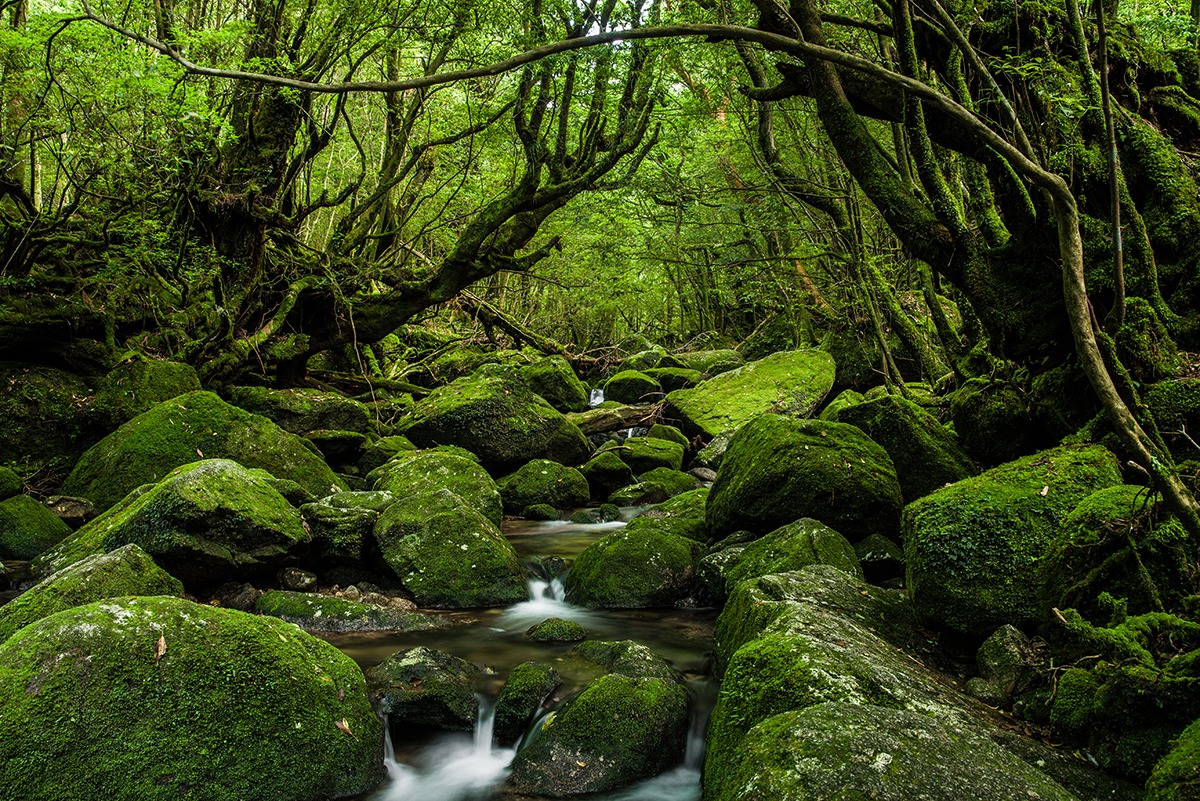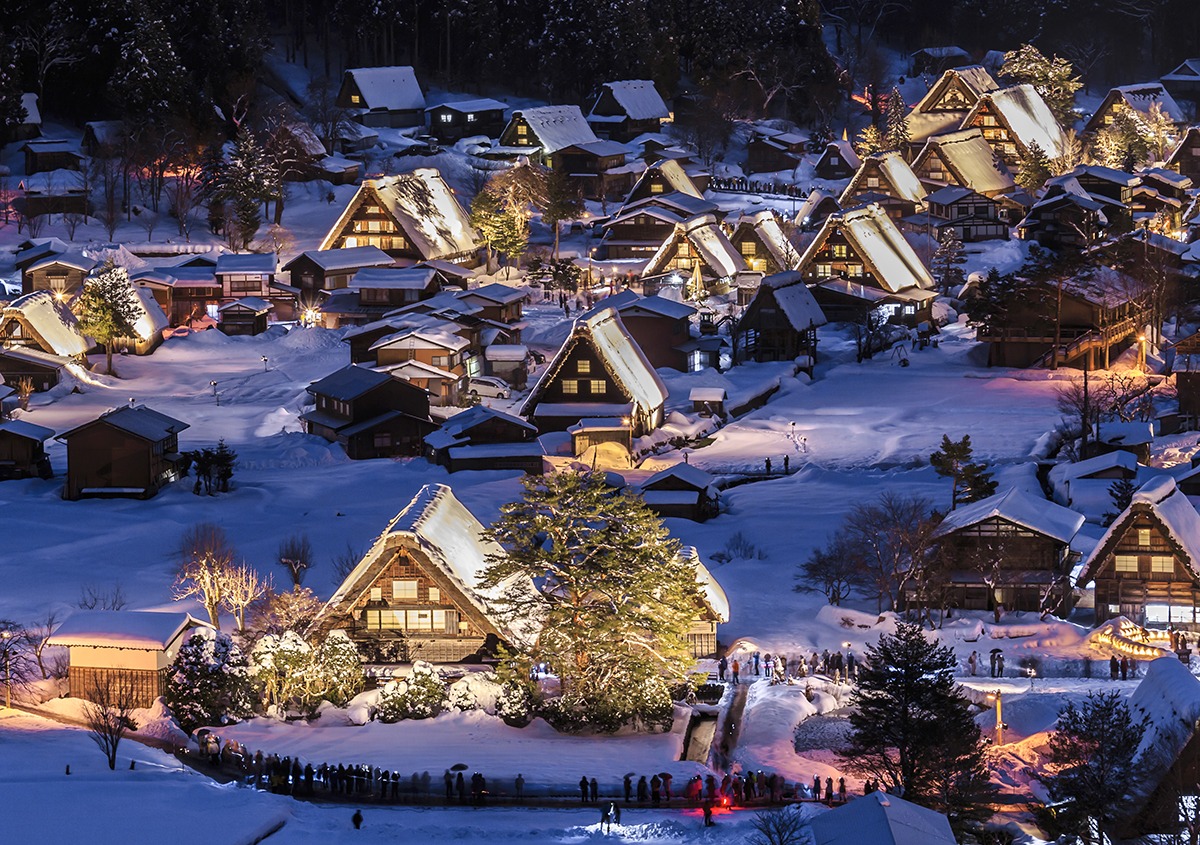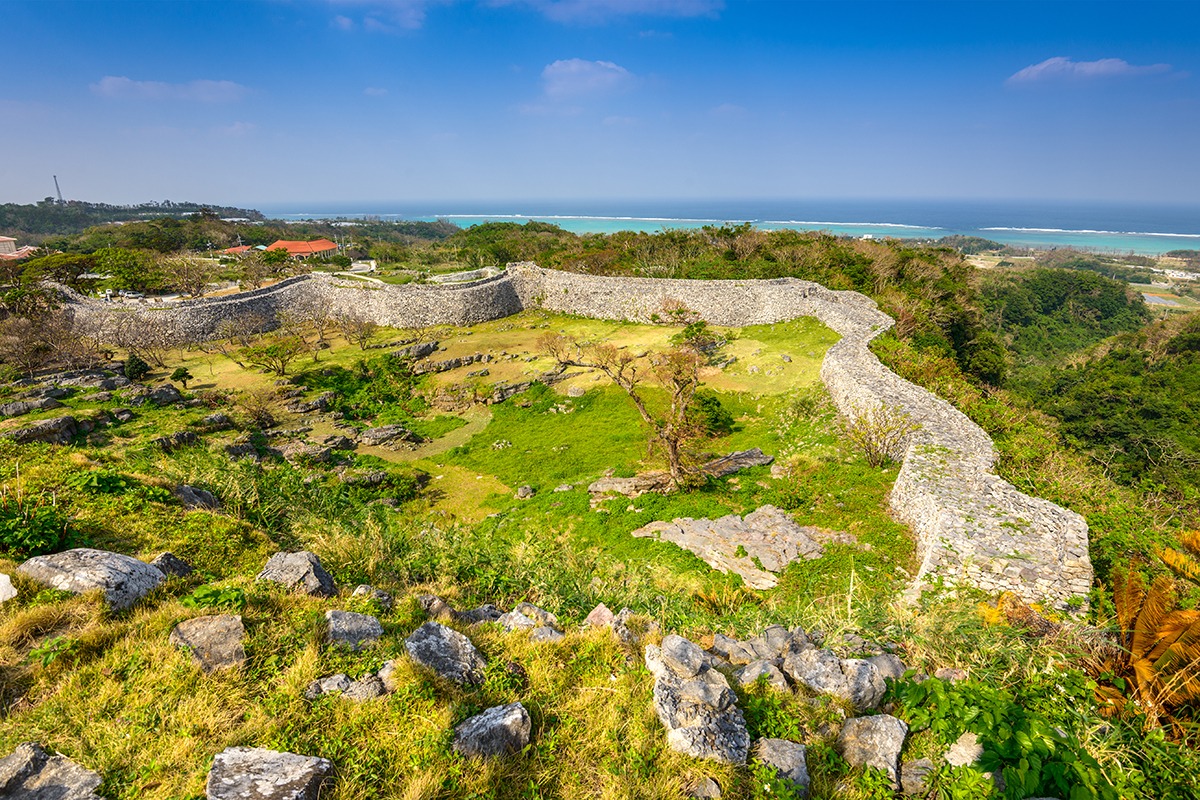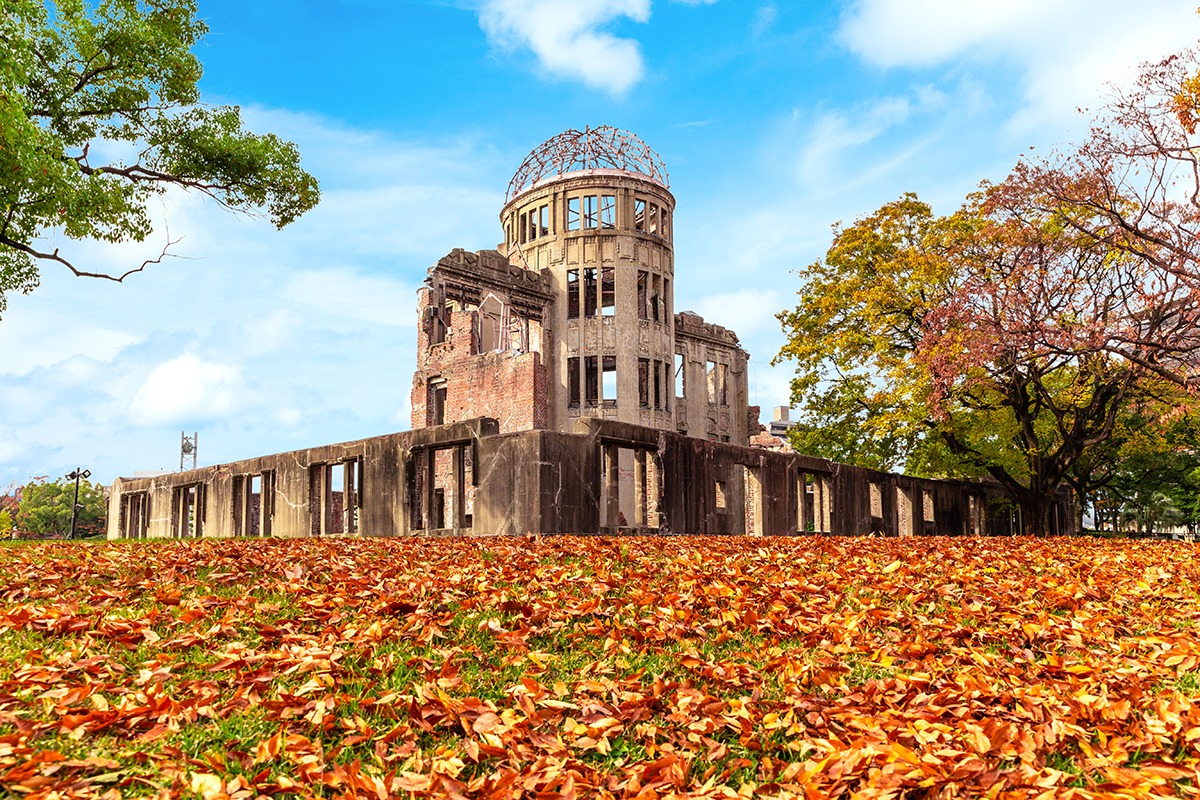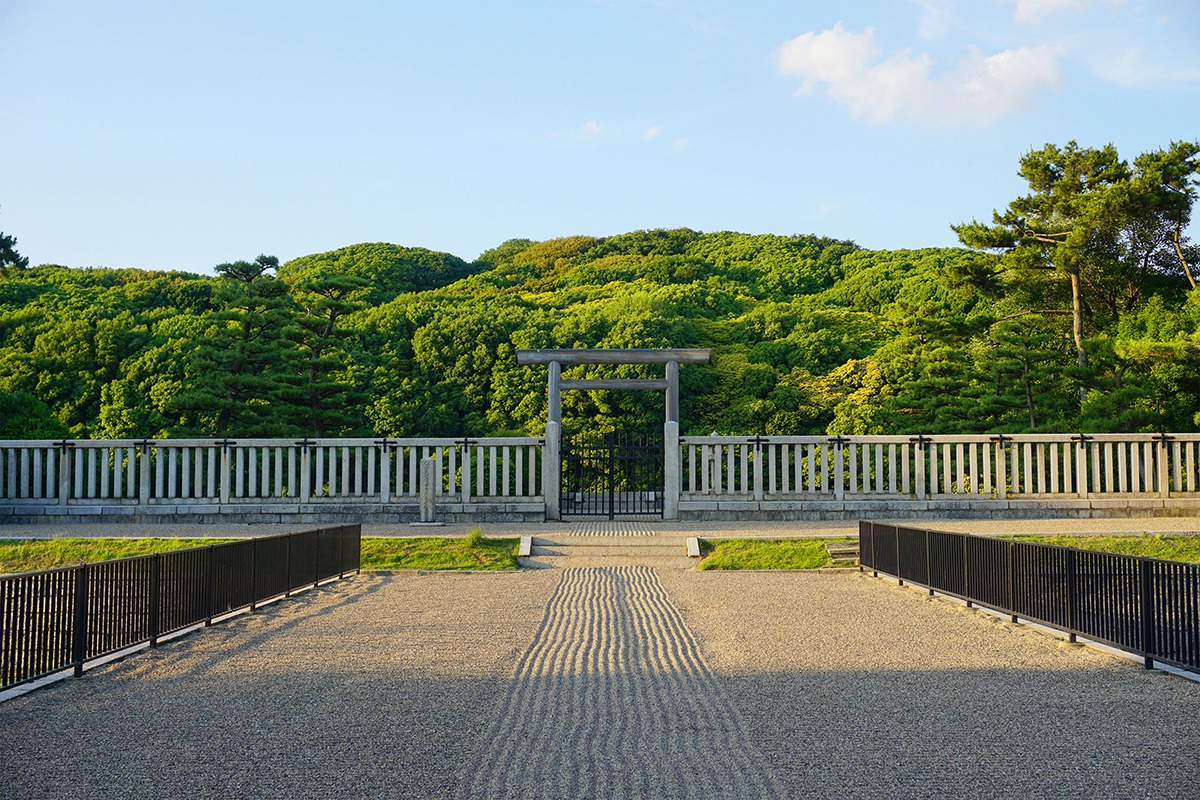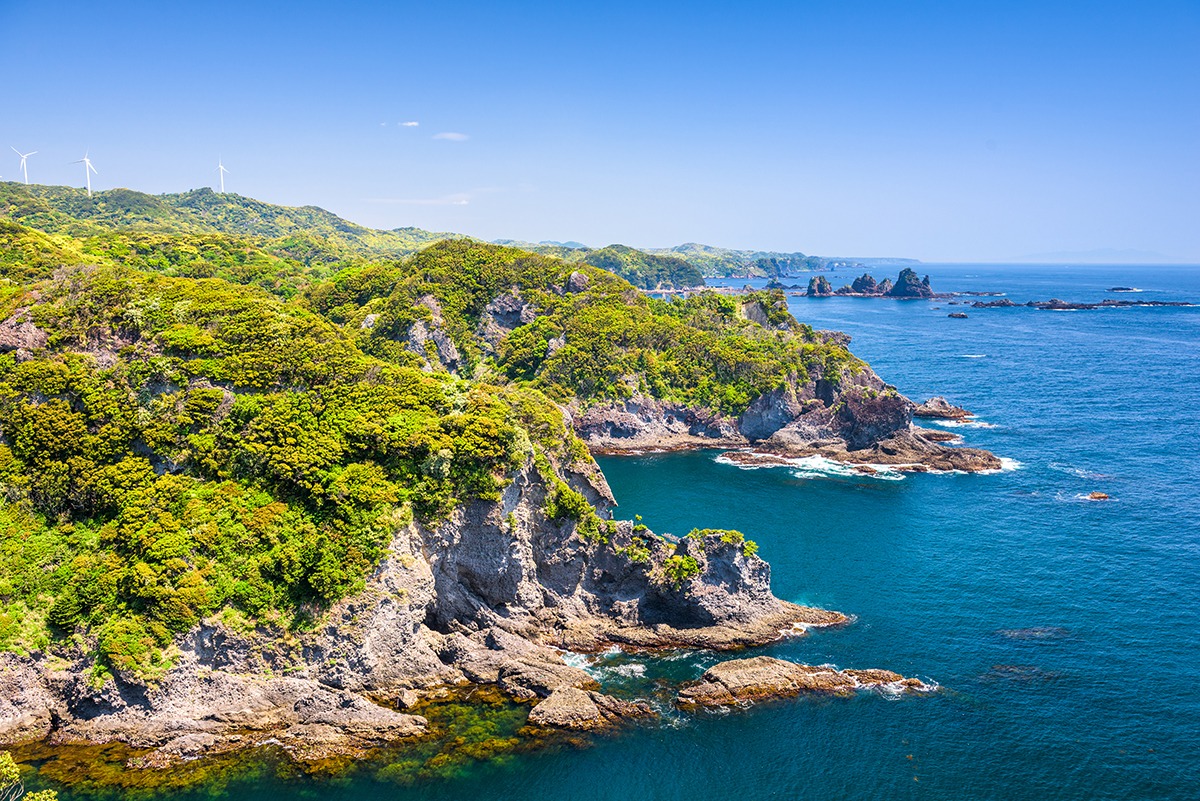UNESCO World Heritage Sites in Japan (and 1 Geopark)
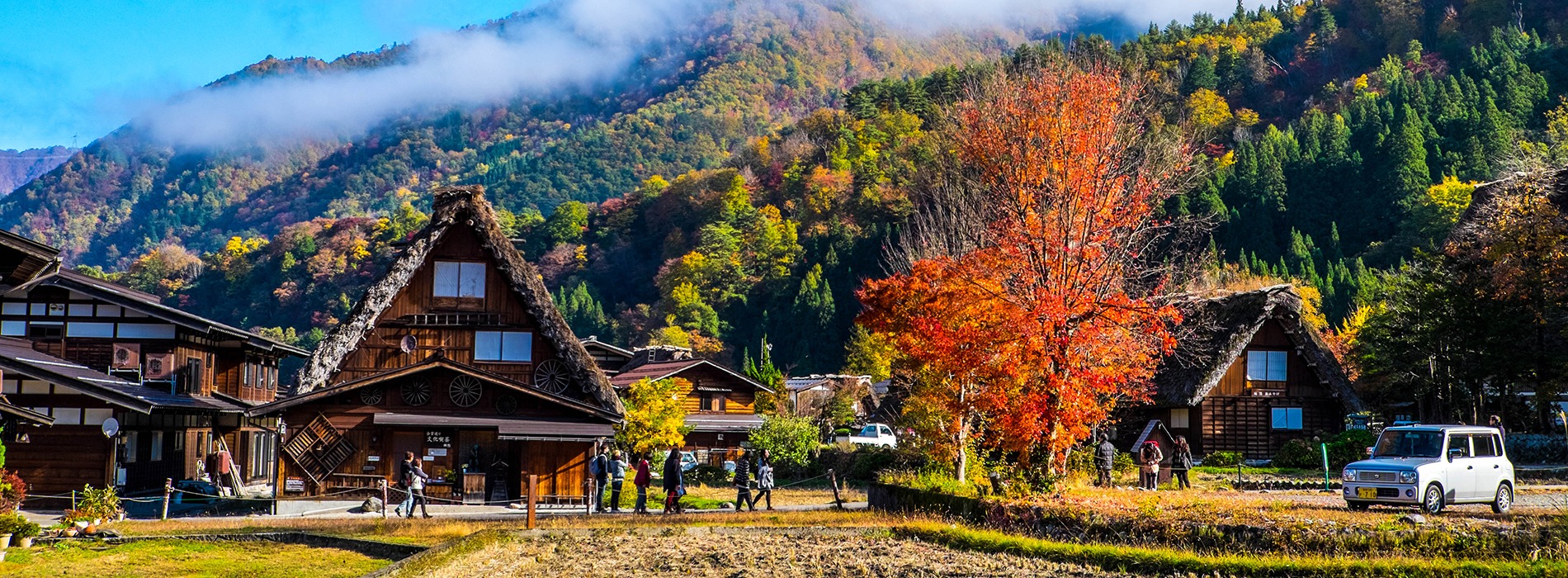
Castles, volcanoes, primeval forests — UNESCO World Heritage Sites in Japan encompass a fantastical range of landmarks and landscapes. With 25 heritage sites in total, and a growing number of natural areas with geopark designations, Japan really does have a UNESCO site for everyone. Most, if not all, have tourist information in English — as do all major city rail networks — so you don’t need to speak or read Japanese to see any of them. To help you decide which UNESCO site to put on your itinerary, here’s an overview of some of the top world heritage properties in Japan, how to travel to them, and where to stay while you’re there!
Mount Fuji
The iconic Fujisan is many things: a national symbol, a pilgrimage site, an active volcano, and the most famous of Japan’s World Heritage Sites. More than 300,000 people summit—as in climb to the top of—Mount Fuji each year, while the surrounding Fuji-Hakone-Izu National Park sees hundreds of millions of visitors annually.
As a result, there are countless types of Mount Fuji tours, catering to all tastes. There are bus tours of the Fuji Five Lakes area, which stop at all the key Fuji sights. There are guided tours up the Yoshida Trail to Fuji’s summit. There are also plenty of viewpoints where you can admire Mount Fuji from a distance—like Chureito Pagoda, which is especially popular during cherry-blossom season (March to mid-April).
How to get there
Multiple buses and trains depart from Tokyo to Mount Fuji daily, including the Fuji Excursion train that takes 115 minutes to get from Shinjuku Station to Kawaguchiko station.
Where to stay
Fujiyoshida is the closest town to Mount Fuji, with a wide variety of accommodations. For a touch of the traditional, consider a Japanese-style suite with a hot-spring bath—something like Fuji Kawaguchiko Onsen. If you’re based in Tokyo, a hotel in Shinjuku will put you in the shopping and entertainment hub of the city, with quick rail connections to Mount Fuji.
Nara
Any historical site with bowing deer deserves to be a national treasure. In the case of Nara City, friendly sika deer are just the icing on the cake, as there are eight separate elements to this listing. Some background: Nara City is the former imperial capital of Japan, built in the 8th century, when Japan had close ties with China. The UNESCO buildings here sport heavy influences both from Tang culture and from Buddhism, the state religion at the time.
All up there are five Buddhist temples, the lantern-lit Kasuga-Taisha shrine, the enormous Heijo Palace, and Kasugayama Primeval Forest next to Nara Park—the part with the deer. For a truly scenic Nara itinerary, visit the imperial city during autumn or spring, when the palace, the shrines, and the forest are awash in seasonal colors.
There’s another UNESCO site worth seeing in Nara Prefecture: “the Buddhist Monuments in the Horyu-ji Area,” around 45 minutes by train from Nara City. This site features a group of historical buildings dating back to the 7th century, including the immaculately preserved Horyu-ji Temple and matching five-tiered pagoda, which contains elaborate Buddhist tableaux carved from clay.
How to get there
Nara is easy to access; only 35 minutes or so from Kyoto and Osaka by train.
Where to stay
While it’s easy to see Nara from a nearby city, there are plenty of accommodations in Nara itself. For enough time to see both UNESCO sites, plan to stay in Nara for a few nights. A budget guesthouse will immerse you properly into local culture, while a ryokan inn like Hotel New Wakasa can give you a luxury onsen experience.
Kyoto
Kyoto is the motherlode of UNESCO World Heritage Sites in Japan, with 17 individual heritage buildings scattered around the city. Some of these have reached icon status, like the Golden Temple AKA Kinkaku-ji, the five-tiered Yasaka Pagoda, and Kiyomizudera Temple, whose wide wooden terrace has become a popular vantage point for spring hanami (flower watching) and autumn leaf peeping.
Is it worth seeing all 17 UNESCO sites in Kyoto? That depends on how quickly you get “temple fatigue,” and how much time and money you have. Remember that Kyoto is more than the sum of its UNESCO parts, with many other cultural heritage sites to see, including the famous red gates of Fushimi-Inari-Taisha Shrine. Then there are contemporary attractions—like the International Manga Museum, the KYOCERA Museum of Art, and food shopping at Nishiki Market—that you shouldn’t miss.
How to get there
Kyoto doesn’t have its own airport, but Kansai International Airport in Osaka is only a 45-minute train trip away. Or you can hop on the shinkansen (bullet train) from Tokyo for a transit time of 2 hours and 15 minutes.
Where to stay
Position yourself near the rail line and you’ll be able to get around with ease. Find accommodation in Gion if you want to stroll narrow cobblestone laneways and browse traditional machiya shophouses. Rates for a luxury ryokan can run high here, but it’s not too hard to find an affordable Kyoto hotel, like M’s Hotel Sanjo Wakoku for under USD 100 per night.
Yakushima
Though this Japanese UNESCO heritage site in Kyushu might not sound familiar, it’s far from an undiscovered gem—in fact, it gets around 200,000 visitors every year. Why? Partly for its natural oddities, like the 2,000-plus-year-old Jomon Sugi cedar tree, more than 1,900 species of flora, and endemic animals like Yaku deer and Yaku macaques. The probable main cause though is that the UNESCO forest here served as the inspiration for Hayao Miyazaki’s Princess Mononoke film.
There are other fun facts about Yaku Island. It has eight peaks, earning it the nickname “the Alps on the ocean.” It rains—a lot; it is the wettest place in Japan, with 10 meters of rain per year. It has a deep-green moss forest you can hike to that really does look like an enchanted glade.
How to get there
Hop on a plane or train to Kagoshima City, a worthy tourist destination in its own right. Ride a 2.5-hour hydrofoil, a 4-hour ferry, or a 13-hour overnight ferry (the cheapest and most adventurous option) from Kagoshima Port. Or avoid boats all together and fly in from Kagoshima, Fukuoka, or Osaka .
Where to stay
With the hydrofoil running several times a day, it’s possible to stay in Kagoshima and see Yakushima on a daytrip. For accommodation in Yakushima itself, you have a world of choice, including homestays, ryokan inns, and hotels with Western-style rooms like Yakushima Green Hotel.
Shirakawa-go
You’ve probably seen pictures of steep, thatch-roofed farmhouses up to their eaves in snow—that’s another of Japan’s UNESCO heritage sites. The “Historic Villages of Shirakawa-go and Gokayama” comprise groups of these Gassho-style houses, enclosed within the alps of Gifu and Toyama prefectures, around 250 kilometers northwest of Tokyo.
The design of these houses is what makes them UNESCO-worthy. Around 250 years old, they were built without nails and have tall attic spaces designed for sericulture (silkworm farming). Their thatched roofs are three feet in thickness and the houses themselves are four stories high.
When to go to Shirakawa-go? This alpine region experiences four distinct seasons, meaning the backdrop changes dramatically every three months, from flower fields to lush rice paddies, and from fiery autumn hues to winter whites.
How to get there
This top tourist area is remote but relatively easy to travel to. First, make your way to Takayama (also a prominent tourist town) from Nagoya via the scenic Wide View Hida Express. From Takayama to Shirakawa-go it’s 50 minutes by bus.
Where to stay
The ultimate Shirakawa-go experience is an overnight stay in a local guesthouse, like Guesthouse Ant Hut. You can also base yourself in Takayama, where you’ll find a vast array of hotels, guesthouses, and onsen stays like Takayama Ouan Hotel.
Okinawa
Did you know that Okinawa and the Ryukyu Islands are culturally distinct from the rest of Japan? The Ryukyu archipelago was once an independent kingdom, thus its UNESCO sites have a different kind of cultural heritage than those in the rest of Japan. There are nine Ryukyu Kingdom UNESCO sites in Okinawa: five castles, two cultural landscapes, and two monuments. Of these, the Nakagusuku Castle Ruins in the city center are the best preserved and easiest to explore. You also don’t want to miss Sefa Utaki, a sacred forest site that’s considered the spiritual center of Okinawa.
There is also a more remote UNESCO site in Okinawa Prefecture: the uninhabited island group registered as “Amami-Oshima Island, Tokunoshima Island, Northern part of Okinawa Island and Iriomote Island.” This site is home to endemic plants and animals, including the rare and endangered (and super-cute) Iriomote cat, the Amami rabbit, and the Ryukyu leaf turtle.
Something extra to note if you like stargazing: Iriomote-Ishigaki National Park is a designated a Dark Sky Place, i.e. an area with low levels of light pollution that offers a superior view of the stars.
How to get there
Okinawa’s international airport is in the capital, Naha, servicing flights within Asia. The fastest way to travel on to Iriomote-Ishigaki National Park is to fly from Naha to Ishigaki airport, which takes 1 hour and 40 minutes. There are local ferries that zip between the different islands.
Where to stay
You’re spoiled for choice when it comes to accommodation in Okinawa—you can make yourself at home in a beach villa, splurge on a five-star resort, or save money with a hotel in Naha. Ishigaki island has a wide selection of stays along its coastlines; the Mr Kinjo chain gives you affordable options close to Ishigaki port.
Hiroshima
Hiroshima Peace Memorial Park needs no introduction—this UNESCO World Heritage Site is the only building to remain standing after the atomic bomb exploded at the end of World War II. The site today comprises the Genbaku Dome (originally an exhibition hall) and Hiroshima Peace Memorial Park . The park features gardens, a museum, and various monuments that invite quiet reflection.
The second UNESCO site in Hiroshima Prefecture is Itsukushima Shrine, known for its “floating” red torii gate that rises from the waters off Miyajima Island. After an obligatory selfie in front of the gate, walk the forested trails of Mount Misen—it takes 1.5-2 hours to reach the summit, where you can enjoy spectacular island and ocean views.
How to get there
Hiroshima, in southwestern Honshu, is well connected to other major Japanese cities by bullet train. There is a direct ferry between Hiroshima Peace Memorial Park and Miyajima that takes 45 minutes.
Where to stay
Motomachi is a good neighborhood to stay in for visiting Hiroshima Peace Memorial Park and Hiroshima Castle. Or find a hotel in Miyajima like Miyajima Morinoyado Inn for onsen bathing and forest views.
Osaka’s Ancient Tumulus Clusters
You’ve probably never heard of the Mozu-Furuichi tumulus clusters. This unusual Japanese UNESCO heritage site comprises 45 ancient burial mounds in the Sakai area in south Osaka. These kofun, as they are called, were constructed between 300–500 AD for the entombment of aristocrats. The largest is Daisen Kofun—the Tomb of Emperor Nintoku—an immense keyhole-shaped island almost 500 meters long, covered in forest and surrounded by a triple moat. You can tour this tomb and see others in Sakai by train, by bike, and/or on foot.
While in Osaka, you will also want to see Osaka Castle, which is not on the UNESCO list, but definitely worth visiting. The castle is one of Japan’s top three most famous castles and its surrounding park is a popular hangout spot for locals.
How to get there
Osaka’s Kansai International Airport is well connected globally, and the bullet train links to Tokyo in 2.5 hours. Once in Osaka, an extensive rail network will get you anywhere you want to go.
Where to stay
Find accommodation along the JR Osaka Loop Line for effortless access to main tourist sites. If you like lively neighborhoods, the Dotonbori area is a great place to stay. Hotel TRAD Replay is a funky budget hotel in Namba, near Dotonbori .
Izu Peninsula
You’ll find this über-volcanic zone only 50 kilometers from Mount Fuji. The UNESCO Global Geopark Izu Peninsula is recognized as the only place on earth where two volcanic arcs collide. As you’d expect, it is prone to quakes, tremors, and tsunami, and has accumulated many unusual and striking land formations over the years.
The Izu region is also blessed with fertile zones (i.e., bountiful and delicious food), some of the best scuba diving in Japan, and hot springs galore. Factor in a temperate year-round climate, spectacular beaches, and the scenic Amagi mountain range to climb, and you’ve got a destination that seems tailor made for nature-lovers—one that’s easily added to a Mount Fuji itinerary. From this geopark you can also hop over to another one: Oshima, a volcanic island where the highlight is a 90-minute trek over black sediment up the slopes of Mount Mihara and around its smoldering caldera.
How to get there
Using the JR Tokaido bullet train, you can get from Tokyo to Atami, the gateway to Izu, within 50 minutes.
Where to stay
A ryokan inn is the only way to stay in Izu—ideally one where you have your own hot-spring bath in your room. Ryokan Senoumi has classic and modern Japanese-style tatami rooms with private onsens overlooking the sea.
You may also like
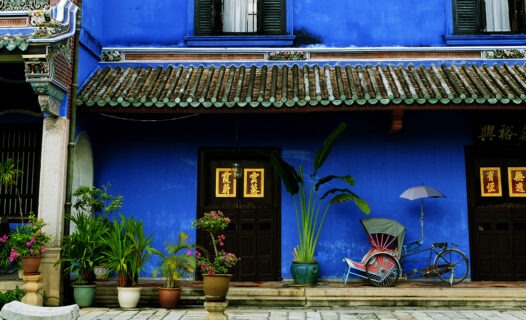
You know you’re in for a special stay when your hotel has a movie credit on IMDB. More than just a place …
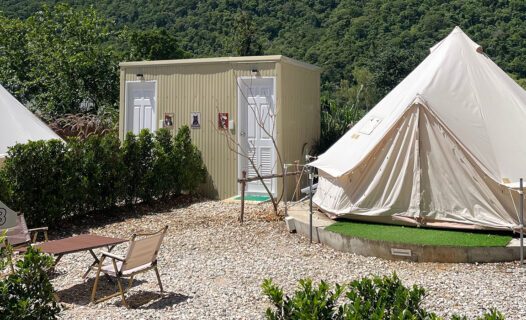
Fancy spending a night in a prison cell, shipping container, cave or Tim Burton-style treehouse? These wonderful and wacky (and sometimes just …
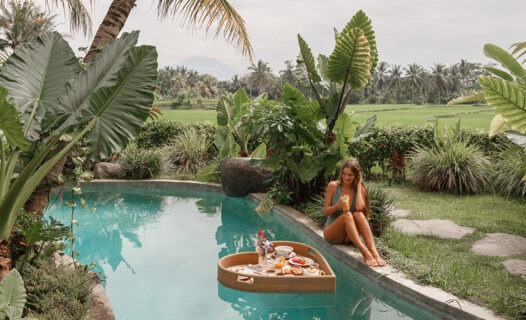
Fancy your own private villa? Or waking up in a quirky themed apartment? Or standing in your own kitchen and seeing a …
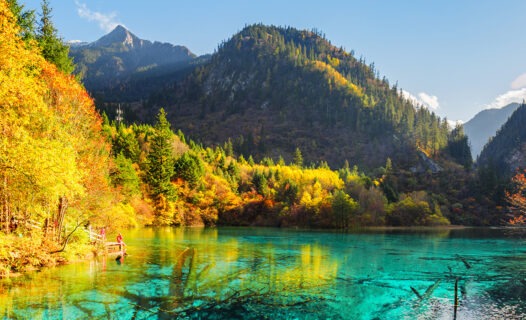
If a picture is worth a thousand words, we can’t begin to use this space to describe what we’re about to reveal. …
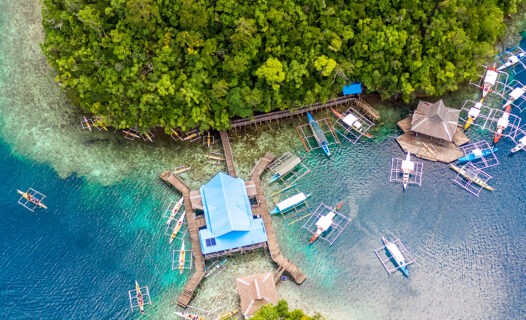
Since the advent of the smartphone and social media, we have become constantly switched on. So much so, there is even a …
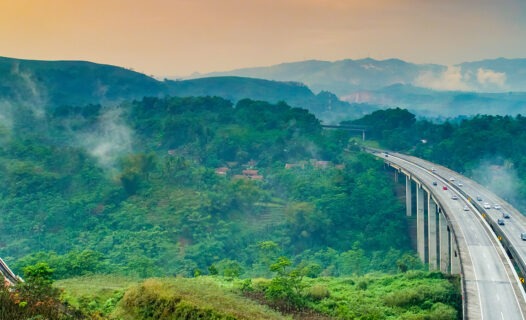
With over 17,500 islands, Indonesia has something for everyone: busy cities, vibrant culture, laid-back beaches and tranquil mountains. Here are five breathtaking …

Balancing wanderlust and the environment: great getaway spots across Asia that are green in more ways than one.
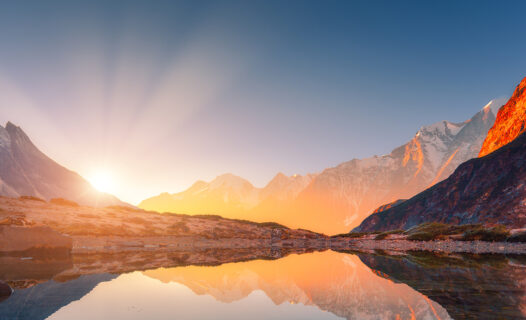
Check off trekking the Himalayas from your bucket list with any of these five incredibly scenic hikes through Asia. Whether you crave …
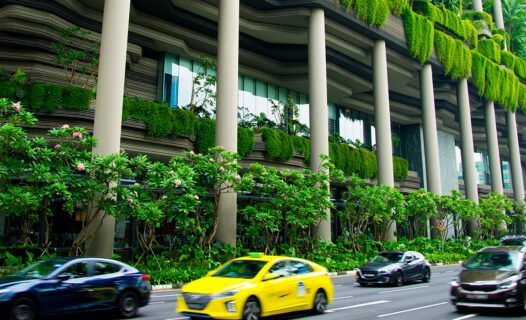
Travelers are increasingly becoming eco-conscious – according to Agoda’s Tech and Travel Study, 58% of travelers prefer eco-friendly properties and 40% are …
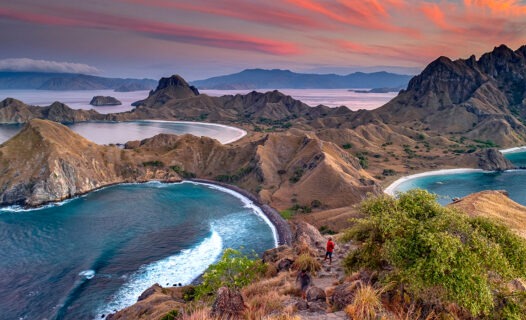
Bali is often the first thing that comes to mind when travelers think of Indonesia. But did you know that Indonesia has …

Castles, volcanoes, primeval forests — UNESCO World Heritage Sites in Japan encompass a fantastical range of landmarks and landscapes. With 25 heritage sites in total, and a growing number of natural areas with geopark designations, Japan really does have a UNESCO site for everyone. Most, if not all, have tourist information in English — as do all major city rail networks — so you don’t need to speak or read Japanese to see any of them. To help you decide which UNESCO site to put on your itinerary, here’s an overview of some of the top world heritage properties in Japan, how to travel to them, and where to stay while you’re there!
Mount Fuji
The iconic Fujisan is many things: a national symbol, a pilgrimage site, an active volcano, and the most famous of Japan’s World Heritage Sites. More than 300,000 people summit—as in climb to the top of—Mount Fuji each year, while the surrounding Fuji-Hakone-Izu National Park sees hundreds of millions of visitors annually.
As a result, there are countless types of Mount Fuji tours, catering to all tastes. There are bus tours of the Fuji Five Lakes area, which stop at all the key Fuji sights. There are guided tours up the Yoshida Trail to Fuji’s summit. There are also plenty of viewpoints where you can admire Mount Fuji from a distance—like Chureito Pagoda, which is especially popular during cherry-blossom season (March to mid-April).
How to get there
Multiple buses and trains depart from Tokyo to Mount Fuji daily, including the Fuji Excursion train that takes 115 minutes to get from Shinjuku Station to Kawaguchiko station.
Where to stay
Fujiyoshida is the closest town to Mount Fuji, with a wide variety of accommodations. For a touch of the traditional, consider a Japanese-style suite with a hot-spring bath—something like Fuji Kawaguchiko Onsen. If you’re based in Tokyo, a hotel in Shinjuku will put you in the shopping and entertainment hub of the city, with quick rail connections to Mount Fuji.
Nara
Any historical site with bowing deer deserves to be a national treasure. In the case of Nara City, friendly sika deer are just the icing on the cake, as there are eight separate elements to this listing. Some background: Nara City is the former imperial capital of Japan, built in the 8th century, when Japan had close ties with China. The UNESCO buildings here sport heavy influences both from Tang culture and from Buddhism, the state religion at the time.
All up there are five Buddhist temples, the lantern-lit Kasuga-Taisha shrine, the enormous Heijo Palace, and Kasugayama Primeval Forest next to Nara Park—the part with the deer. For a truly scenic Nara itinerary, visit the imperial city during autumn or spring, when the palace, the shrines, and the forest are awash in seasonal colors.
There’s another UNESCO site worth seeing in Nara Prefecture: “the Buddhist Monuments in the Horyu-ji Area,” around 45 minutes by train from Nara City. This site features a group of historical buildings dating back to the 7th century, including the immaculately preserved Horyu-ji Temple and matching five-tiered pagoda, which contains elaborate Buddhist tableaux carved from clay.
How to get there
Nara is easy to access; only 35 minutes or so from Kyoto and Osaka by train.
Where to stay
While it’s easy to see Nara from a nearby city, there are plenty of accommodations in Nara itself. For enough time to see both UNESCO sites, plan to stay in Nara for a few nights. A budget guesthouse will immerse you properly into local culture, while a ryokan inn like Hotel New Wakasa can give you a luxury onsen experience.
Kyoto
Kyoto is the motherlode of UNESCO World Heritage Sites in Japan, with 17 individual heritage buildings scattered around the city. Some of these have reached icon status, like the Golden Temple AKA Kinkaku-ji, the five-tiered Yasaka Pagoda, and Kiyomizudera Temple, whose wide wooden terrace has become a popular vantage point for spring hanami (flower watching) and autumn leaf peeping.
Is it worth seeing all 17 UNESCO sites in Kyoto? That depends on how quickly you get “temple fatigue,” and how much time and money you have. Remember that Kyoto is more than the sum of its UNESCO parts, with many other cultural heritage sites to see, including the famous red gates of Fushimi-Inari-Taisha Shrine. Then there are contemporary attractions—like the International Manga Museum, the KYOCERA Museum of Art, and food shopping at Nishiki Market—that you shouldn’t miss.
How to get there
Kyoto doesn’t have its own airport, but Kansai International Airport in Osaka is only a 45-minute train trip away. Or you can hop on the shinkansen (bullet train) from Tokyo for a transit time of 2 hours and 15 minutes.
Where to stay
Position yourself near the rail line and you’ll be able to get around with ease. Find accommodation in Gion if you want to stroll narrow cobblestone laneways and browse traditional machiya shophouses. Rates for a luxury ryokan can run high here, but it’s not too hard to find an affordable Kyoto hotel, like M’s Hotel Sanjo Wakoku for under USD 100 per night.
Yakushima
Though this Japanese UNESCO heritage site in Kyushu might not sound familiar, it’s far from an undiscovered gem—in fact, it gets around 200,000 visitors every year. Why? Partly for its natural oddities, like the 2,000-plus-year-old Jomon Sugi cedar tree, more than 1,900 species of flora, and endemic animals like Yaku deer and Yaku macaques. The probable main cause though is that the UNESCO forest here served as the inspiration for Hayao Miyazaki’s Princess Mononoke film.
There are other fun facts about Yaku Island. It has eight peaks, earning it the nickname “the Alps on the ocean.” It rains—a lot; it is the wettest place in Japan, with 10 meters of rain per year. It has a deep-green moss forest you can hike to that really does look like an enchanted glade.
How to get there
Hop on a plane or train to Kagoshima City, a worthy tourist destination in its own right. Ride a 2.5-hour hydrofoil, a 4-hour ferry, or a 13-hour overnight ferry (the cheapest and most adventurous option) from Kagoshima Port. Or avoid boats all together and fly in from Kagoshima, Fukuoka, or Osaka .
Where to stay
With the hydrofoil running several times a day, it’s possible to stay in Kagoshima and see Yakushima on a daytrip. For accommodation in Yakushima itself, you have a world of choice, including homestays, ryokan inns, and hotels with Western-style rooms like Yakushima Green Hotel.
Shirakawa-go
You’ve probably seen pictures of steep, thatch-roofed farmhouses up to their eaves in snow—that’s another of Japan’s UNESCO heritage sites. The “Historic Villages of Shirakawa-go and Gokayama” comprise groups of these Gassho-style houses, enclosed within the alps of Gifu and Toyama prefectures, around 250 kilometers northwest of Tokyo.
The design of these houses is what makes them UNESCO-worthy. Around 250 years old, they were built without nails and have tall attic spaces designed for sericulture (silkworm farming). Their thatched roofs are three feet in thickness and the houses themselves are four stories high.
When to go to Shirakawa-go? This alpine region experiences four distinct seasons, meaning the backdrop changes dramatically every three months, from flower fields to lush rice paddies, and from fiery autumn hues to winter whites.
How to get there
This top tourist area is remote but relatively easy to travel to. First, make your way to Takayama (also a prominent tourist town) from Nagoya via the scenic Wide View Hida Express. From Takayama to Shirakawa-go it’s 50 minutes by bus.
Where to stay
The ultimate Shirakawa-go experience is an overnight stay in a local guesthouse, like Guesthouse Ant Hut. You can also base yourself in Takayama, where you’ll find a vast array of hotels, guesthouses, and onsen stays like Takayama Ouan Hotel.
Okinawa
Did you know that Okinawa and the Ryukyu Islands are culturally distinct from the rest of Japan? The Ryukyu archipelago was once an independent kingdom, thus its UNESCO sites have a different kind of cultural heritage than those in the rest of Japan. There are nine Ryukyu Kingdom UNESCO sites in Okinawa: five castles, two cultural landscapes, and two monuments. Of these, the Nakagusuku Castle Ruins in the city center are the best preserved and easiest to explore. You also don’t want to miss Sefa Utaki, a sacred forest site that’s considered the spiritual center of Okinawa.
There is also a more remote UNESCO site in Okinawa Prefecture: the uninhabited island group registered as “Amami-Oshima Island, Tokunoshima Island, Northern part of Okinawa Island and Iriomote Island.” This site is home to endemic plants and animals, including the rare and endangered (and super-cute) Iriomote cat, the Amami rabbit, and the Ryukyu leaf turtle.
Something extra to note if you like stargazing: Iriomote-Ishigaki National Park is a designated a Dark Sky Place, i.e. an area with low levels of light pollution that offers a superior view of the stars.
How to get there
Okinawa’s international airport is in the capital, Naha, servicing flights within Asia. The fastest way to travel on to Iriomote-Ishigaki National Park is to fly from Naha to Ishigaki airport, which takes 1 hour and 40 minutes. There are local ferries that zip between the different islands.
Where to stay
You’re spoiled for choice when it comes to accommodation in Okinawa—you can make yourself at home in a beach villa, splurge on a five-star resort, or save money with a hotel in Naha. Ishigaki island has a wide selection of stays along its coastlines; the Mr Kinjo chain gives you affordable options close to Ishigaki port.
Hiroshima
Hiroshima Peace Memorial Park needs no introduction—this UNESCO World Heritage Site is the only building to remain standing after the atomic bomb exploded at the end of World War II. The site today comprises the Genbaku Dome (originally an exhibition hall) and Hiroshima Peace Memorial Park . The park features gardens, a museum, and various monuments that invite quiet reflection.
The second UNESCO site in Hiroshima Prefecture is Itsukushima Shrine, known for its “floating” red torii gate that rises from the waters off Miyajima Island. After an obligatory selfie in front of the gate, walk the forested trails of Mount Misen—it takes 1.5-2 hours to reach the summit, where you can enjoy spectacular island and ocean views.
How to get there
Hiroshima, in southwestern Honshu, is well connected to other major Japanese cities by bullet train. There is a direct ferry between Hiroshima Peace Memorial Park and Miyajima that takes 45 minutes.
Where to stay
Motomachi is a good neighborhood to stay in for visiting Hiroshima Peace Memorial Park and Hiroshima Castle. Or find a hotel in Miyajima like Miyajima Morinoyado Inn for onsen bathing and forest views.
Osaka’s Ancient Tumulus Clusters
You’ve probably never heard of the Mozu-Furuichi tumulus clusters. This unusual Japanese UNESCO heritage site comprises 45 ancient burial mounds in the Sakai area in south Osaka. These kofun, as they are called, were constructed between 300–500 AD for the entombment of aristocrats. The largest is Daisen Kofun—the Tomb of Emperor Nintoku—an immense keyhole-shaped island almost 500 meters long, covered in forest and surrounded by a triple moat. You can tour this tomb and see others in Sakai by train, by bike, and/or on foot.
While in Osaka, you will also want to see Osaka Castle, which is not on the UNESCO list, but definitely worth visiting. The castle is one of Japan’s top three most famous castles and its surrounding park is a popular hangout spot for locals.
How to get there
Osaka’s Kansai International Airport is well connected globally, and the bullet train links to Tokyo in 2.5 hours. Once in Osaka, an extensive rail network will get you anywhere you want to go.
Where to stay
Find accommodation along the JR Osaka Loop Line for effortless access to main tourist sites. If you like lively neighborhoods, the Dotonbori area is a great place to stay. Hotel TRAD Replay is a funky budget hotel in Namba, near Dotonbori .
Izu Peninsula
You’ll find this über-volcanic zone only 50 kilometers from Mount Fuji. The UNESCO Global Geopark Izu Peninsula is recognized as the only place on earth where two volcanic arcs collide. As you’d expect, it is prone to quakes, tremors, and tsunami, and has accumulated many unusual and striking land formations over the years.
The Izu region is also blessed with fertile zones (i.e., bountiful and delicious food), some of the best scuba diving in Japan, and hot springs galore. Factor in a temperate year-round climate, spectacular beaches, and the scenic Amagi mountain range to climb, and you’ve got a destination that seems tailor made for nature-lovers—one that’s easily added to a Mount Fuji itinerary. From this geopark you can also hop over to another one: Oshima, a volcanic island where the highlight is a 90-minute trek over black sediment up the slopes of Mount Mihara and around its smoldering caldera.
How to get there
Using the JR Tokaido bullet train, you can get from Tokyo to Atami, the gateway to Izu, within 50 minutes.
Where to stay
A ryokan inn is the only way to stay in Izu—ideally one where you have your own hot-spring bath in your room. Ryokan Senoumi has classic and modern Japanese-style tatami rooms with private onsens overlooking the sea.
You may also like
